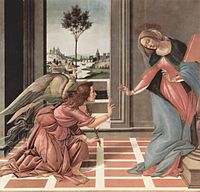My Poster must convey the style that I have chosen to interpret, this to include colours, style, type, composition etc. In order to create this I have chosen to use Francis Picabia as my inspiration, in order to achieve this I have chosen one of his famous paintings called Udnie, which he produced in 1913. I really like the selection of colours that have been used they are all cool colours, greys, blues, whites and greens. The crowded space of curved lines and shapes create a sense of depth with in the paintings. Trying to interpret this in my own way, I will find to be a challenge but very fulfilling, I will use a similar colour palet and use a variety of lines and shapes, along with gradients to create the variation in each colour.

When creating this poster I found that Picabia uses lots of layers, he lays shape upon shape on top of each other. I found this to be a challenge as the layered shapes are some how all linked in some way. Also the colours he has used are not all solid colours, I found this to be very hard to recreate on the computer. I create a colour pallet that used similar colours, I created a swatch to enable to me to reuse the same colours.
I started by doing lots of random shapes as a background, then began to layer, I have tried to recreate one similar to his Udnie, but of my own creation. It took me many attempts and reworking in order to create the atmosphere that Picabia manages to create in his art work. In the Udnie, the centre is rather full and got lots going on, however less so in the outskirts. Below is my first attempt: I did not finish it as I was just not feeling it, thought it lacked the crowded centre and some of the shapes were to big, so from the experience that I had from doing this one I started to recreate another version, this time aiming to make it more crowded in the middle.

After I had created the above, I tried again, this time I wanted to be more random with my positioning of my objects, but all so wanted to achieve some flow, like picabia's Udnie, I also looked at some of his other art works that were of a similar configuration to the Udnie, for example his 'Dances at the spring' (1912), 'Procession in Saville' (1912), 'New York' (1913) and mostly ' Edtanist' (1913).
I concentrated on the shapes that he uses and how he has put them together, I found this to be quite a challenge because it was hard to make it work without making it look to orderly. Below is my second version. I have changed the text and its colour on the right poster, as I was not too sure on my first choice of text.


I did some type research, I found out that Dadaists thrived in making their type style unconventional, they did this by frequently mixing different fonts, using unorthodox punctuation, printing both horizontally and vertically, also they used many random text symbols on the text. A French Avant Guard poet described the Dada revolution with graphic design as 'each page must explode, either by deep and weight seriousness - the whirlwind, the vertigo, the new, the eternal - by the cursing joke, by the enthusiasm for the principles, or by the manner of being printed'. This is truse of the typographic style as it broke many traditions and there were many interpretations of this unconventional Dada typography, below are a couple of examples. I began looking for a font that would be of the Dada style, I found on on Defont website called DaDa Antiquerist, I thought that this was of similar style because of the unconventional way that the letters do not line up straight.






.jpeg)
.jpeg)

















































